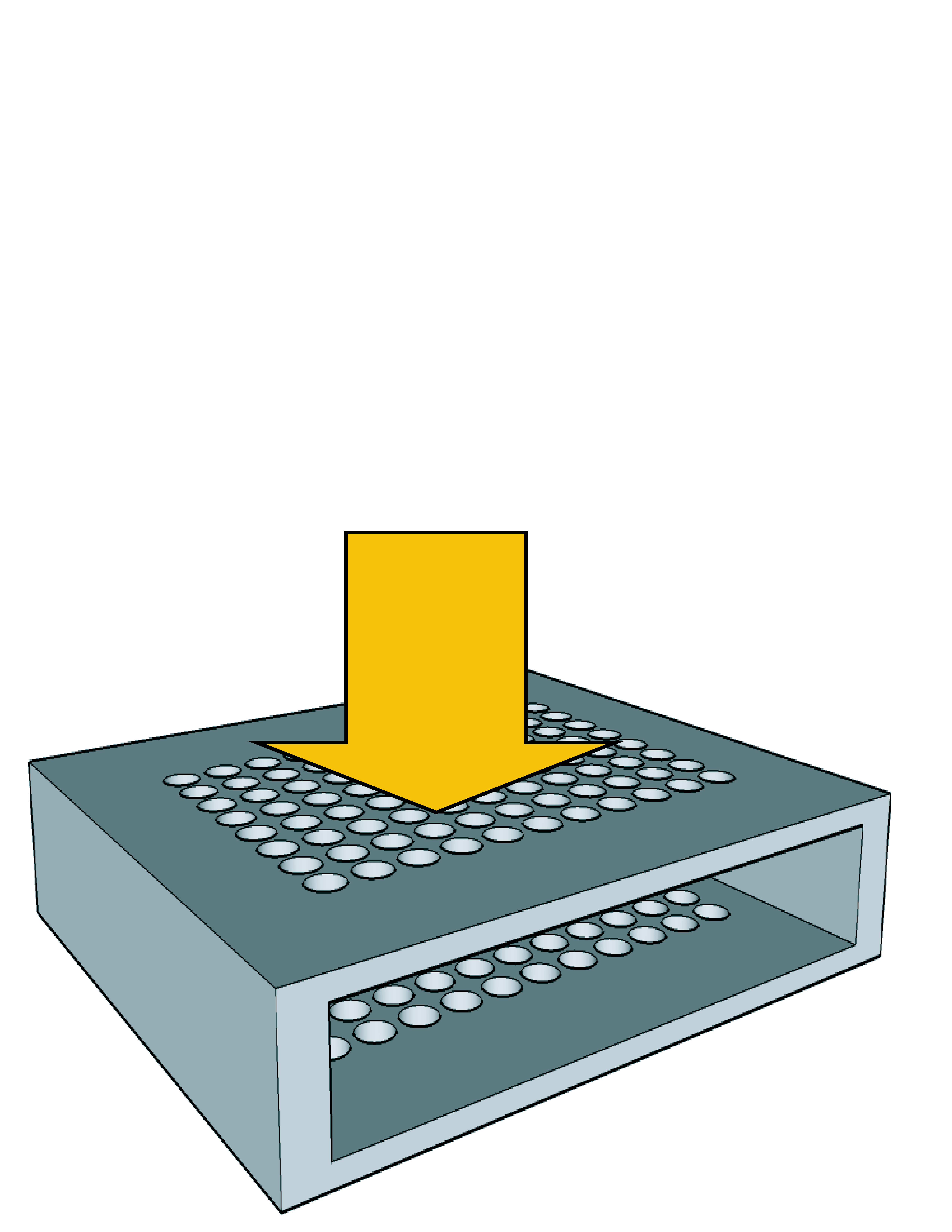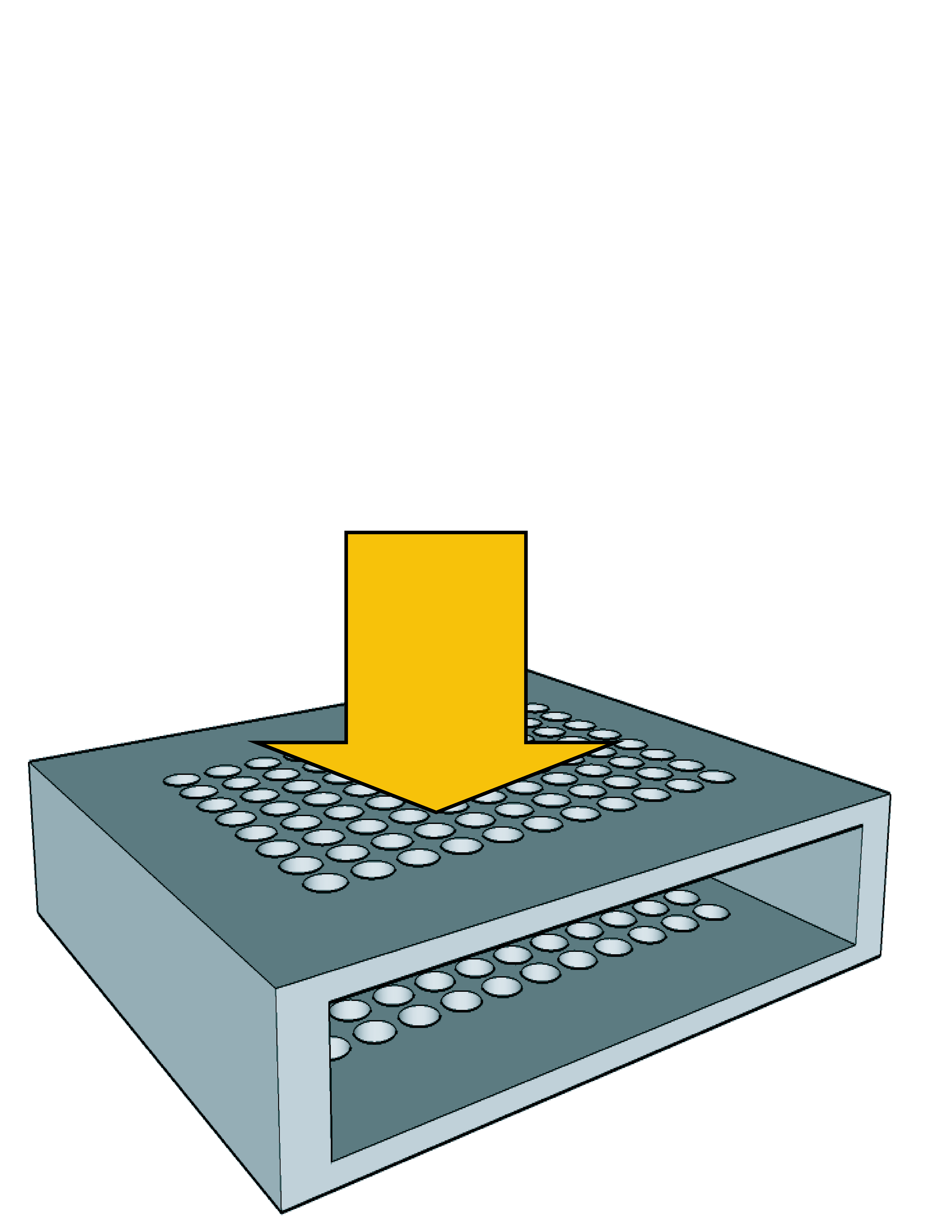Two layers and light
The radiation force from a beam of light is extremely small because photons do not have a rest mass. However, substantial optomechanical coupling can be achieved in specially designed devices that have small mass and also exploit the properties of light under strong confinement. The applications range from manipulation of molecules to laser cooling of macroscopic objects [1].
In an article published in Physical Review B, Young-Geun Roh and collaborators from the Basic Research and Photonics Laboratories of NTT, Japan, and the Japan Science and Technology Agency report the development of a device that exhibits very strong optomechanical coupling. The device consists of a bilayer of photonic crystals—two semiconductor slabs with a periodic arrangement of holes bored in them—separated by a thin air gap and clamped on all sides to form a rectangular box. The researchers show that shining a laser beam on the device excites an optical resonance, which in turn causes a mechanical displacement of the photonic crystal slabs. They also observe modulation of the intensity of the reflected light from the device, caused by the coupling of the thermal vibrations of the slabs to the optical resonance. – Alex Klironomos
[1] Florian Marquardt and Steven M. Girvin, Physics 2, 40 (2009).





